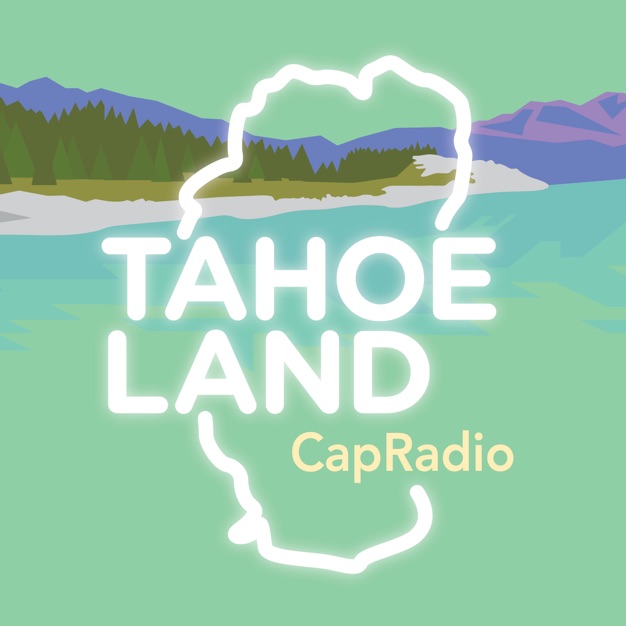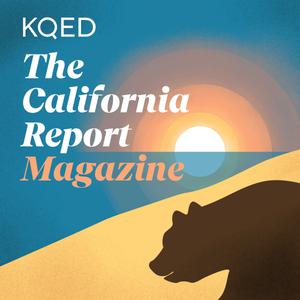
TahoeLand
Capital Public Radio
Tahoe is a jewel in the Sierra Nevada, but climate change threatens to transform the region by the century’s end. CapRadio’s Ezra David Romero explores this petri dish for scientific research to see how Tahoe can help us confront the global climate crisis.
- TahoeLand: TahoeLand Update: Caldor Fire Threatens Tahoe
Two years after making TahoeLand, host Ezra David Romero finds himself reporting on a major wildfire threatening the beloved region. He talks on KQED’s The Bay podcast about reporting on the Caldor Fire. The blaze recently traveled from the western Sierra, over Echo Summit toward South Lake Tahoe, which is now under mandatory evacuation. Ezra reflects with Host Ericka Cruz Guevarra on making TahoeLand two years ago and how climate change is transforming the area today.
1 September 2021, 7:47 pm - TahoeLand: TahoeLand Live!
This is our last episode of TahoeLand. I know, it’s really sad. But this season has come to an end. And to celebrate, we hosted a live podcast taping in South Lake. This is a shorter version of that 90-minute event.
We invited listeners to join us at a resort called Edgewood Tahoe. There were these floor-to-ceiling windows that revealed a panorama of the lake.
This live version of TahoeLand is a little different — and a little longer — than our other episodes. You’ll hear from scientists, city leaders and a story or two from locals who feel they’ve been left out of the climate-crisis conversation. I hope you enjoy it.
10 October 2019, 1:00 pm - TahoeLand: The Political Climate
A common theme CapRadio’s Ezra David Romero hears while hanging out in Tahoe is residents disappointed that their elected official in Congress does not believe in human-caused climate change. If 97 percent of climate scientists agree that climate-warming trends over the past century are very likely due to human activities, why aren’t politicians doing more about it?
This perceived disconnect has caused people you wouldn't expect to jump into the political game and run for local office. And they’re running under the banner of doing something about climate change.
But don’t worry: This episode doesn’t go too far into the weeds when it comes to politics. It is also about seeing the lake differently. What if we thought of Lake Tahoe as part of our identity, instead of just a place we visit?
3 October 2019, 1:39 pm - TahoeLand: Final Two Episodes Coming Soon!
The podcast team was in Tahoe this week doing a special live taping of our final episode, so we won’t have one for you this week. Ezra asked many of the people you’ve heard throughout the podcast: what’s next? What solutions are on the horizon? Stay tuned for that and our politics episode coming soon!
26 September 2019, 1:00 pm - TahoeLand: Playing With Fire19 September 2019, 1:00 pm
- TahoeLand: ‘Locals Season’
Climate change is impacting everyday life for Lake Tahoe’s locals: Rich and poor, old timers and newcomers. These year-round residents, whose jobs are often to make sure tourists enjoy Tahoe, are being forced to adapt in order to make it. For some, it's heart wrenching. But for others, it’s giving them a new vision for Tahoe’s future.
12 September 2019, 1:25 pm - TahoeLand: Episode 5 Coming Soon!
The TahoeLand team is busy working on the next episode which is all about Tahoe’s tourist economy. Here’s a sneak peek of what’s coming next week.
5 September 2019, 1:00 pm - TahoeLand: Bad News, Bears
Climate change isn’t just altering how people experience Lake Tahoe, it’s also impacting animals. And perhaps the most prominent victim are the kings of the forest: bears.
Part of the problem is there is not a top-down, unified approach for how to keep black bears out of our garbage and trash. Our leftovers and waste lead to human-bear interactions — and that’s ultimately bad news for bears.
Bears in Tahoe are also hibernating less — if at all. And it’s not just the black bears feeling the impact of climate change — polar bears, grizzlies and other bears around the world are at risk.
29 August 2019, 3:55 pm - TahoeLand: Bye, Bye Snow
Tahoe’s identity as a winter wonderland is in jeopardy. One of the most noticeable signs of warming temperatures in Tahoe are changes to the snowpack. Specifically, researchers forecast a lot less of it some years and a ton more other years. That has huge ramifications for everything from businesses that rely on snow to Olympians figuring out how to practice their winter sports.
22 August 2019, 1:27 pm - TahoeLand: The Shrimp Problem
Invasive shrimp are threatening Lake Tahoe. These are not the big white and orange crustaceans you get in a taco or on top of pasta. They’re called Mysis shrimp, and they’re voracious invaders that threaten Tahoe’s blue hue. If they stay and multiply, it’ll be hard to keep Tahoe from turning green. But if we remove them, they might also help other communities unlock climate change solutions.
And the shrimp aren’t alone. They are joined by other invasive species, including three pound goldfish and cannibalistic bullfrogs.
15 August 2019, 1:00 pm - TahoeLand: That Blue Hue
Lake Tahoe is perhaps the most popular lake in the West. It sits at around 7,000 feet and attracts some 29 million visitors a year — more than three times Yosemite and Yellowstone national parks combined. What people don’t know is that the lake’s blue hue is also a barometer of how climate change is impacting our world.
8 August 2019, 1:00 pm - More Episodes? Get the App
- http://www.capradio.org
- en-US
Your feedback is valuable to us. Should you encounter any bugs, glitches, lack of functionality or other problems, please email us on [email protected] or join Moon.FM Telegram Group where you can talk directly to the dev team who are happy to answer any queries.
 Capital Public Radio: The View From Here Podcast
Capital Public Radio: The View From Here Podcast
 Insight with Beth Ruyak
Insight with Beth Ruyak
 The California Report Magazine
The California Report Magazine
 Keys To The House
Keys To The House
 What's Left? by BuzzFeed News Opinion
What's Left? by BuzzFeed News Opinion